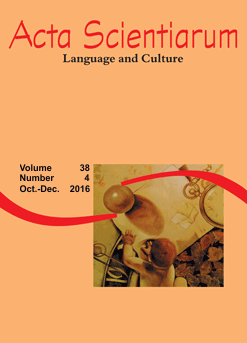<b><i>Corpus</i> based translation pedagogy: theory and practice for teaching translational <i>habitus</i> using corpora
Abstract
The concept of habitus (Bourdieu, 1980) represents an experience system that works as a matrix of actions and makes possible to perform tasks. By applying this conception in Translation Studies, authors such as Simeoni (1998) suggest the existence of a translational habitus, which contributes to the formulation of translation strategies. As part of the Pedagogy related to translation, Díaz Fouces (1999) states that there is a guideline devoted to teaching, which is directed to the recognition of real language use via corpora, so that it can facilitate the systematization of information to serve as a basis for practice. Therefore, our theoretical approach is based on Corpus Linguistics (Berber Sardinha, 2010), Corpus Based Translation Studies (Baker, 1996, 2000) and Corpus Based Translation Pedagogy (Laviosa, 2009; Camargo, 2011). We prepared a proposal for teaching and we organized a corpus composed by the work called Maíra (Ribeiro, 1976) and by its respective translation. We also undertook a reflection on teaching how to translate terms (Barros, 2004) and brazilianisms (Faulstich, 2004), as well as conducted an exercise in translation practice in which students were confronted with a possible assimilation of application of translational habitus.
Downloads
Metrics
DECLARATION OF ORIGINALITY AND COPYRIGHTS
I Declare that current article is original and has not been submitted for publication, in part or in whole, to any other national or international journal.
The copyrights belong exclusively to the authors. Published content is licensed under Creative Commons Attribution 4.0 (CC BY 4.0) guidelines, which allows sharing (copy and distribution of the material in any medium or format) and adaptation (remix, transform, and build upon the material) for any purpose, even commercially, under the terms of attribution.
Read this link for further information on how to use CC BY 4.0 properly.




















6.png)









